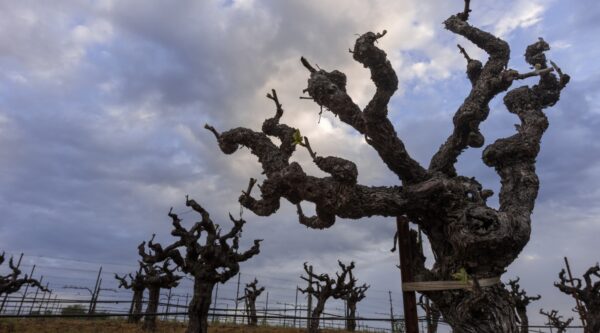
The national authorities responsible for such things have strict rules about what can be said on a wine label. But there’s always room for creativity, and it can be hard to know where legally sanctioned terms leave off and marketing begins. In the latter category are references to the age of vines that are the source of the grapes used to make what’s in the bottle.
You’ll see vieilles vignes on French wine labels, alte Reben on German, and (more rarely) vecchie viti on bottles from Italy. The phrases all mean “old vines.” But just how old is old? 30 years? 50? 100? And why should we care?
The first question is easy to dispense with. Since wine law doesn’t define the term, old, in this context, means pretty much whatever the winemaker decides it does. On the second point, conventional wisdom has it that more mature vines enjoy an advantage over younger ones because they have more well-developed root systems.
It’s true that vines with roots that reach deeply into the earth can tap reserves of moisture that in a hot, dry vintage might not be available to less mature plants. (Note that in much of Europe, the irrigation of wine vines is not permitted.) But while this may have something to do with survival, it doesn’t mean that more established vines guarantee more depth and richness in the bottle — there are just too many other factors in play.
A counter example frequently cited is the 1973 Stag’s Leap Wine Cellars Napa Valley Cabernet that bested 1970 Château Mouton Rothschild and Château Haut Brion in the famous Judgment of Paris tasting in 1976 (and put U.S. wine on the map). The upstart Californian was made of fruit from vines only three years old — mere adolescents, really.
To explain this outcome, it’s been offered that vines in their first bearing years are not as vigorous as they will become and so have a more advantageous balance of fruit to leaf. But one must also take into account that as vines reach middle age (15-20 years or so), both fruit and canopy begin to diminish. In this way, mature vines may eventually attain the same degree of balance as their youthful counterparts, at the very moment their advancing years are beginning to confer some advantages of their own.
One example of this might be the declining yields of fruit that characterize senescent vines — the boost in quality arrives as a dwindling number of grapes enjoy a bigger share of the energy mature roots and trunks pump into them. For some growers, this fact alone is sufficient to put the super in superannuated.
It’s also the case that many winemakers reserve the fruit from their grayest vines for their prestige cuvées, while leaving the younger ones to make up their entry-level offerings. This widespread and persistent vintner behavior is perhaps the strongest empirical evidence we have for legitimizing a privileged status for pensioner vineyards.
There’s one more factor to consider. Because old vine cuvées may command a premium, it’s generally worth winemakers’ time and resources to lavish a bit more attention on them. They may, for example, find ways to lower the yield even further, risk picking a bit later (to boost ripeness), or treat the wine to some time in new oak barrels. All of which add a certain drama to the finished product. Ironically, these steps only make it more difficult for us to tease out and isolate whatever contribution those senior vines are actually making.
So long as there are no agreed-upon standards for what constitutes an old vine wine, no rules about what percentage of old vine juice must be present to merit the description, and no scientific confirmation on precisely how geezer vines might make wine of better quality, we’ll be thrown back on our own devices, palates and judgment to settle the question of whether old vines really do make better wine.
But that doesn’t seem like too onerous an obligation to me. How about you?